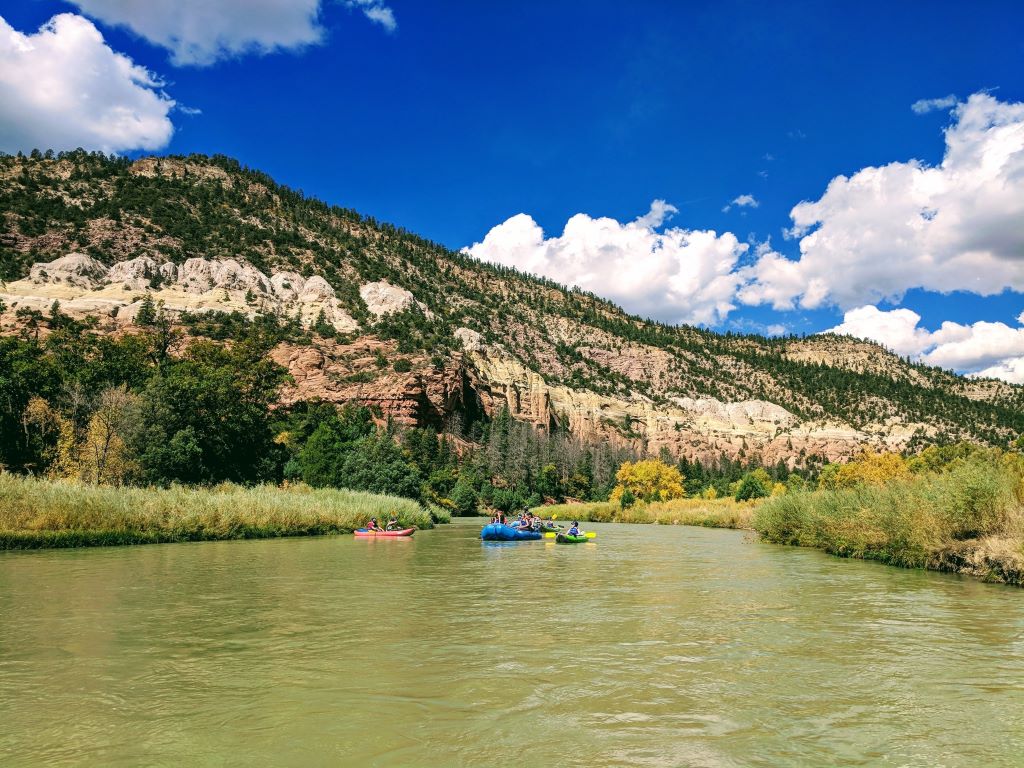Earlier this year, I came upon a map produced by the Environmental Working Group showing widespread contamination of freshwater fish by toxic “forever chemicals” caught in waterways throughout the country. Most notable to me was the terrifying discovery of highly-contaminated common carp found in the Middle Rio Grande, right here in New Mexico. While it probably shouldn’t have been surprising to me given what I know of the ubiquity of these toxic chemicals in the environment, it still hit too close to home.
For more than a decade, a steady drumbeat has been building over the environmental and public health threat posed by forever chemicals in the environment. There are thousands of these per- and polyfluoroalkyl substances, or “PFAS” chemicals, which don’t readily break down in the environment and can quickly build up in human or animal bodies, or “bioaccumulate,” to toxic levels.
PFAS exposure has been shown to cause a variety of health effects, including increased cancer risk, reduced fertility, and more. Commonly used in things like firefighting foam, stain repellants, and even non-stick cookware and food packaging, forever chemicals are now being found virtually everywhere that we look – from the umbilical cord blood of newborn infants to rainfall in Antarctica.
Just last year, Waterkeeper Alliance – of which Rio Grande Waterkeeper is a proud member – released the findings of a groundbreaking analysis of PFAS in American waterways. In that study, 83 percent of the 114 waterways tested across the country were found to contain at least one type of these dangerous forever chemicals. According to the Environmental Working Group, there are more than 2,800 sites across the country that are known to be contaminated by these toxic chemicals.
With this in mind, I was excited by recent news that the Environmental Protection Agency is proposing a new rule to regulate forever chemicals under the federal Safe Drinking Water Act. For the first time ever, the agency proposes to limit levels of six PFAS compounds in drinking water, including the two most controversial, known as PFOA and PFOS. These chemicals have been found to pose health dangers at extremely low levels of exposure and are estimated to be contaminating the drinking water for more than 100 million Americans. In proposing to set the drinking water standard at the current detection limit for PFOA and PFOS, EPA is basically saying that any detectable amount of these toxic chemicals leaves water unsafe to drink.
Which brings me back to that toxic carp found in the Rio Grande. For context, EPA’s new drinking water standard is 4 parts per trillion (ppt) of PFOA or PFOS, while fish from the Rio Grande were found to contain PFOS at 28,400 ppt, with total PFAS chemicals detected at an astounding 43,183 ppt. With levels this high, eating even a single PFAS-contaminated fish could result in as much toxic chemical exposure as months of drinking water contaminated above EPA’s newly-proposed limit.
Given the significant public health threat posed by widespread PFAS contamination in waterways across the country, EPA’s newly-proposed drinking water standard is a welcome step in the right direction to protect the public from this dangerous pollution. But there is still a long road ahead to tackle this insidious and persistent problem.
To start, federal and state funding is needed to assist community water suppliers in funding essential infrastructure upgrades needed to effectively remove these dangerous chemicals from drinking water. But those costs should ultimately be paid not by taxpayers, but by the manufacturers of these toxic chemicals, who have been aware of the potential public health risks of PFAS chemicals for decades.
The EPA also needs to work quickly to broaden the scope of the PFAS chemicals regulated under the Safe Drinking Water Act, given the thousands of toxic chemicals that are not covered by the newly proposed rule.
Finally, we need strong federal safeguards to stop companies from discharging these toxic pollutants into our waters, air, and environment. And if these substances cannot be managed safely from cradle to grave, no one should be allowed to produce them in the first place.
It is an unfortunate reality that we fully expect industry opposition to EPA’s proposal. But with its Waterkeeper Alliance allies, Rio Grande Waterkeeper and WildEarth Guardians will be there to make sure that EPA follows through on this much-needed proposal, in accordance with its mission of protecting public health and the environment. Too much is at stake.

Rio Chama. Photo by WildEarth Guardians
